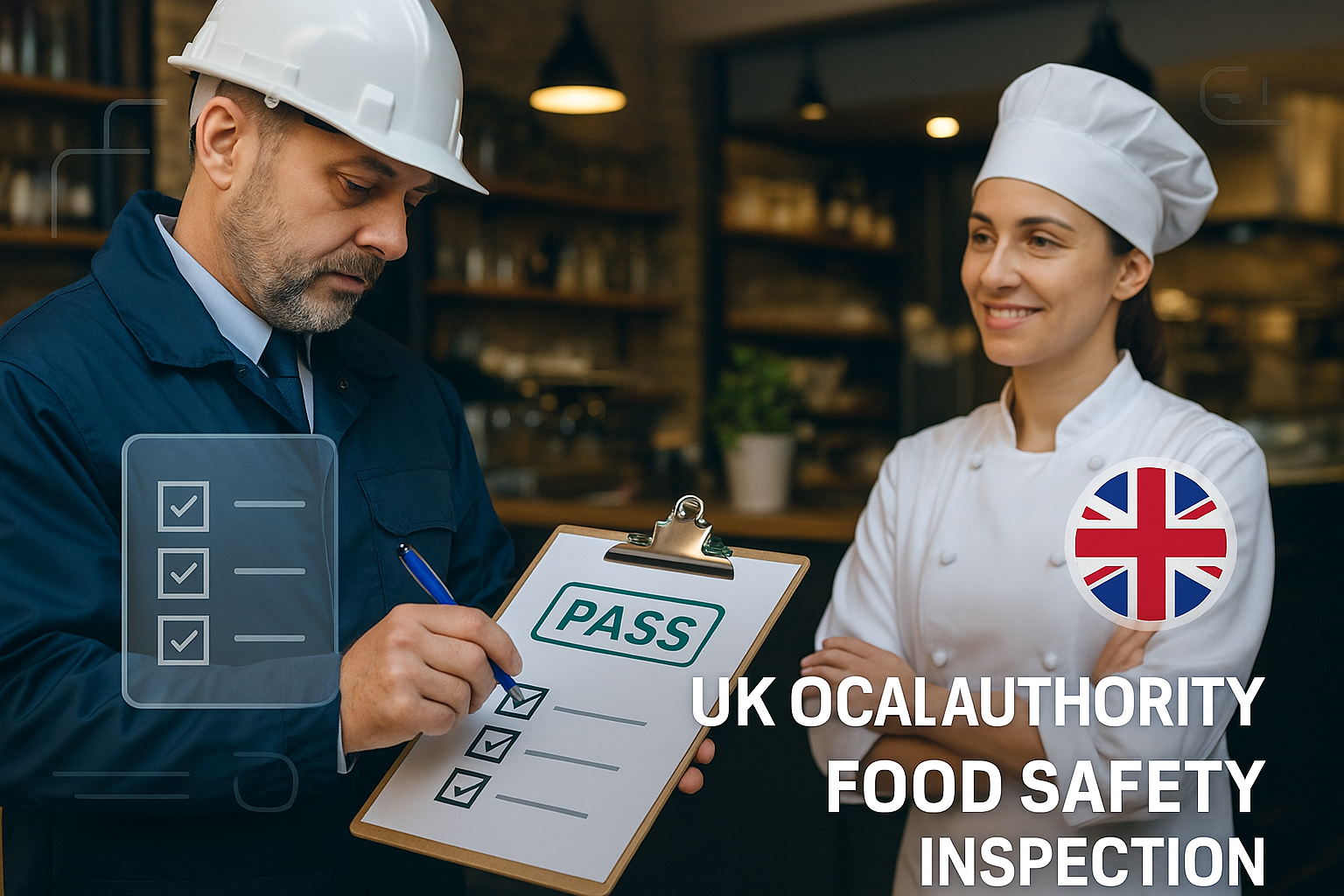Your cart is currently empty!
Tag: food safety inspection SMEs
-

Surviving Your Local Authority Food Safety Inspection: Top Tips for SMEs
Local authority food safety inspections are a fact of life for every UK café, bistro, and takeaway. While they can feel daunting, with the right preparation you can turn inspection day into an opportunity to showcase your high standards and win a 5‑star rating. This guide delivers actionable, SEO‑optimized advice specifically for small food premises—complete with checklists, real‑world examples, and invitations to contact us for a hands‑on mock audit or bespoke support.
1. Understand the Inspection Process
How Inspectors Score Your Premises
Local officers evaluate under three key headings:
-
Hygiene Standards of Food Handling
-
Cleanliness & Condition of Facilities
-
Management & Documentation
Each category receives a score; combined, they yield your overall Food Hygiene Rating (0–5). Familiarise yourself with the Food Standards Agency’s inspection criteria and local authority guidance documents to know exactly what an officer will look for.
Insider Tip: Download the FSA’s “Rating Scheme Benchmark” to see real examples of compliance versus non‑compliance.
2. Pre‑Inspection Preparation: Self‑Audit and Mock Runs
Conduct a Thorough Self‑Audit
-
Checklist Walkthrough: Use a room‑by‑room, task‑by‑task pre‑inspection checklist covering:
-
Temperature logs (chilled ≤ 8 °C, hot‑hold ≥ 63 °C)
-
Food storage practices (raw vs. cooked segregation)
-
Cleanliness of surfaces, drains, extraction hoods
-
Pest‑control records and proof of professional treatments
-
-
Document Review: Ensure your HACCP plan, training logs, and allergen declarations are up to date, signed, and filed in a clearly labelled binder.
Get Your Free Checklist:
Contact us to receive our customizable Pre‑Inspection Checklist and arrange a complimentary mock inspection.
3. Inspection Day: Best Practices
First Impressions Matter
-
Warm Welcome: Greet your inspector promptly, introduce your “Inspection Lead,” and offer a quick tour.
-
Transparency: Present your documentation folder, pointing out key records (temperatures, cleaning schedules, training certificates).
-
Guided Walkthrough: Escort the inspector through critical zones—kitchen, storage, prep areas—highlighting your controls (colour‑coded boards, sealed bins).
Handling Questions & Observations
-
Remain calm and professional.
-
If a minor lapse is identified, acknowledge it and detail immediate corrective actions (e.g., “We’ll deep‑clean this drain by end of day and update the log”).
-
Avoid arguments; keep the tone collaborative.
4. Responding to Inspection Findings
Minor Recommendations vs. Formal Notices
-
Recommendations: Often low‑risk suggestions. Implement within 7 days, document completion, and notify the inspector if required.
-
Non‑Conformities: If a critical issue arises (e.g., evidence of pest activity or unsafe temperatures), you’ll receive a written notice and a re‑inspection date. Take immediate action to avoid score reduction.
Expert Help:
Contact us to get a tailored action plan and fast‑track your corrective measures.
5. Post‑Inspection Best Practices
Maintain Your Standards
-
Weekly Spot‑Checks: Rotate self‑audit responsibilities among staff using your checklist.
-
Monthly Team Briefings: Share inspection learnings, update your HACCP plan, and refresh training on hand‑washing or allergen protocols.
-
Annual Full Audit: Engage an external consultant for a comprehensive review ahead of next year’s inspection.
Promote Your Success
Once you secure a high rating, display your certificate prominently in‑store, on your website, and on social media. A 5‑star score becomes a marketing asset—don’t let it gather dust!
Ready to Nail Your Next Inspection?
Don’t leave your food safety inspection to chance. Our specialists have guided over 150 UK SMEs to 5‑star ratings through mock audits, tailored training, and hands‑on support.
📞 Contact us today to book your free consultation and Pre‑Inspection Checklist—let’s make sure your next inspection is your best one yet!
-